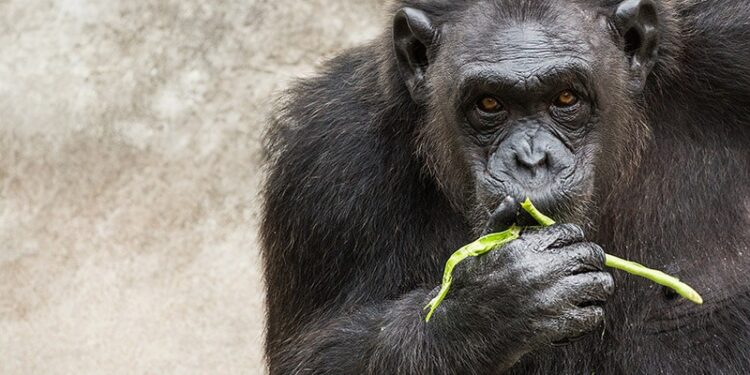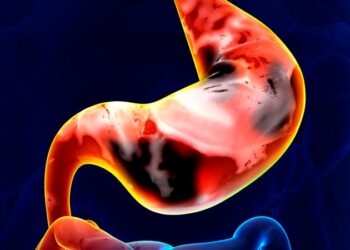A study published in Science by researchers from the University of Southern California in Los Angeles revealed that mice exhibit behaviors resembling first aid. Researchers observed mice pulling the tongues of unconscious peers to clear their airways and removing obstructions from their mouths to facilitate recovery.
Determining the motivation behind this behavior is challenging, wrote Wenjian Sun, PhD, and colleagues, but the actions have similarities to human first aid measures.
Ants and First Aid
Mice are not the only animals that exhibit behaviors resembling first aid. Biologist and science author Mario Ludwig, PhD, in an interview with Medscape’s German edition, reminded us of the “blue-light ants.” Matabele ants (Megaponera analis), which live south of the Sahara, always hunt termites in groups, with between 200 and 500 ants participating in the raid. About half of the ants enter their victims’ tunnels and attempt to kill as many termites as possible. During these attacks, 1%-2% of the ants are injured by the defensive termites, usually resulting in bitten or chewed-off legs. After the fight, the ants collect the dead termites and search for injured ants.
“The injured ants call for help using alarm pheromones,” explained Ludwig. First responders then grab the injured ants and carry them back to their nests. “However, only ants with non–life-threatening injuries are rescued. Fatally injured ants are not saved.” This process resembles a form of triage. “In the nest, the injured ants are cared for, and their wounds are licked — the saliva of the caregiving ants contains antibiotic agents,” Ludwig said.
Apes and Self-Medication
Great apes are known to self-medicate in the wild. “A classic example is chimpanzees. When infested with intestinal parasites, they regularly consume leaves from Aspilia plants,” Ludwig reported.
These plants, which are related to sunflowers, are bitter and are not part of the apes’ regular diet.
Anthropologist Richard Wrangham, PhD, professor of biological anthropology at Harvard University, Cambridge, Massachusetts, observed in the 1990s that chimpanzees consistently consumed Aspilia leaves.
It is believed that this plant is used medicinally by chimpanzees, and they swallow the hairy leaves of Aspilia rudis after the onset of the rainy season, when parasitic infections are more likely to occur.
Chimpanzees have also been observed treating their own wounds and those of their peers with a cream made from crushed insects. Scientists from the Institute of Cognitive Science at the University of Osnabrück, Osnabrück, and the Max Planck Institute for Evolutionary Anthropology in Leipzig, Germany, documented this behavior during the Ozouga Chimpanzee Project in Loango National Park, Gabon. Their findings were published in Current Biology in 2022.
Dolphins and Coral Use
In the Red Sea, Indo-Pacific bottlenose dolphins (Tursiops aduncus) rub against specific coral species such as Rumphella aggregata and Sarcophyton and sponges such as Ircinia.
These marine invertebrates contain 17 identified bioactive compounds with antibacterial and antioxidant properties. This behavior is believed to help dolphins maintain skin health and protect them against microbial infections.
Other examples of self-medication in animals include Alaskan brown bears and North American bisons.
“To rid themselves of tapeworms, brown bears consume sharp-edged sedge grass, while bison chews the bark of a tree known to be effective against amoebiasis,” Ludwig explained.
Many animals take mud baths to rid themselves of parasites on their skin. “When the mud dries and is rubbed off, the parasites are removed along with it,” said Ludwig.
Monkeys Know
Monkeys are known to be aware of their actions, unlike bears, cattle, or deer, whose mud-wallowing behavior may be unintentional. “With monkeys, however, we know,” said Ludwig, referring to their deliberate use of natural repellents.
South American capuchin monkeys face severe mosquito problems during the rainy seasons. In 2003, biologist Paul J. Weldon, PhD, and colleagues at the Smithsonian Institution, Washington, DC, observed that these monkeys use millipedes as a natural insect repellent.
They squeeze Orthoporus dorsovittatus until it releases a defensive secretion. “In defense, the insect injects a secretion of poisonous benzoquinones from numerous glands. The monkeys rub themselves with this secretion and are no longer bitten,” Ludwig reported.
He added that these benzoquinones are “more effective than any mosquito repellent used by the US Army.”
Weldon’s experiments showed that even in captivity, capuchin monkeys actively sought the mosquito repellent lotion and refused to go without it. “The monkeys were given paper tissues soaked in benzoquinones, and they immediately rubbed themselves with them. As a control, the monkeys were given paper tissues soaked in acetone, which were rejected. This shows that the monkeys know exactly what they are doing,” Ludwig explained.
Some animals use benzoquinones, a defensive substance with mild hallucinogenic effects, to achieve relaxation and a euphoric state. However, benzoquinones are considered carcinogenic and unsuitable for human use.
Potential Human Remedies
Some remedies used by chimpanzees may have potential applications in humans. Fabien Schultz, PhD, head of the Ethnopharmacology and Zoopharmacognosy Junior Research Group at the Bernhard Nocht Institute for Tropical Medicine in Hamburg, Germany, is investigating this possibility.
Schultz collects natural remedies, such as plants, insects, and fungi, from Indigenous communities in African countries. He also observes the self-medication behaviors of chimpanzees, mountain gorillas, and elephants.
Schultz and his colleagues analyze whether the collected materials have pharmacologic effects. The aim is to document knowledge about these traditional remedies and identify new pharmacologic agents that can be used in modern medicine.
“We may be able to learn from our closest relatives in the animal kingdom, such as chimpanzees and mountain gorillas. We have initial evidence that these substances could also be applicable to humans,” Schultz said in a German public television documentary.
Trial and Error Learning
Biologists believe that animals discovered natural medicines to protect themselves against parasites, diseases, or toxins through trial and error, as explained by Ludwig.
Dog owners may notice that their pets deliberately swallow certain types of grass. Shortly afterward, the dogs vomit the grass or pass the blades undigested. Similarly, undigested grass blades are often found in the droppings of these animals. These animals seem to “know” which leaves, blades, or roots to consume to combat infections, worms, or stomach upsets.
This knowledge is passed on to offspring and other group members, either by teaching them which leaves help with specific ailments or through observational learning. “With a lot of goodwill, one could say that animals diagnose themselves. Whether this is actually the case, however, is highly debated,” Ludwig noted.
Birds and Self-Medication
Most animals that practice self-medication are mammals, although ants, which exhibit a form of collective intelligence, and honeybees, which use antimicrobial resins in nest-building, also engage in such behaviors. For example, sparrows and bullfinches in urban areas protect themselves from parasites by using tobacco products such as cigarette butts. Mexican scientists observed that these birds collected cigarette butts and incorporated them into their nests. The researchers found that nests containing cigarette butts had fewer mites than those without cigarette butts.
Some bird species, such as jays and carrion crows, have been observed sitting in anthills and “showering” in formic acid, which protects them from parasites.
Migratory birds prepare for their long journey south with a special diet. “Before their journey, the birds gorge themselves on dark berries. These berries are rich in antioxidants, a true fitness food,” Ludwig noted.
In 2013, Navindra Seeram, PhD, from the University of Rhode Island, Kingston, Rhode Island, and colleagues collected samples of 12 common berries consumed by migratory birds on Block Island, an important stopover for these birds. The researchers measured the levels of antioxidants and plant pigments in the berries at their peak ripeness, including bay berries, elderberries, and viburnum (Viburnum dentatum) berries.
They found that birds preferred the dark viburnum berries, which had the highest antioxidant content and 650% more pigment than the average of all other berries combined. The berries also act as antioxidants, preventing these aggressive compounds from wreaking havoc in the body. This selective diet primarily prevents inflammation.
“It is also suspected that the birds discovered this by chance and then passed it on,” Ludwig noted.
Universal Self-Medication
Michael A. Huffman, PhD, professor in the Department of Ecology and Social Behavior at the Primate Research Institute of Kyoto University, Inuyama, Japan, and a leading researcher in animal self-medication, believes that every animal species treats itself.
“Every species on the planet gets sick, is affected by parasites or microbes, or suffers from some other type of illness. We have accidents, fall, and cut ourselves. Therefore, every animal on this planet resorts to self-medication,” Huffman explained in an interview. Observations and studies have been conducted on all animals, from ants and bees to humans.
This story was translated from Medscape’s German edition using several editorial tools, including AI, as part of the process. Human editors reviewed this content before publication.
Source link : https://www.medscape.com/viewarticle/animals-are-doctors-too-hidden-therapies-we-can-learn-2025a1000717?src=rss
Author :
Publish date : 2025-03-25 10:51:00
Copyright for syndicated content belongs to the linked Source.














